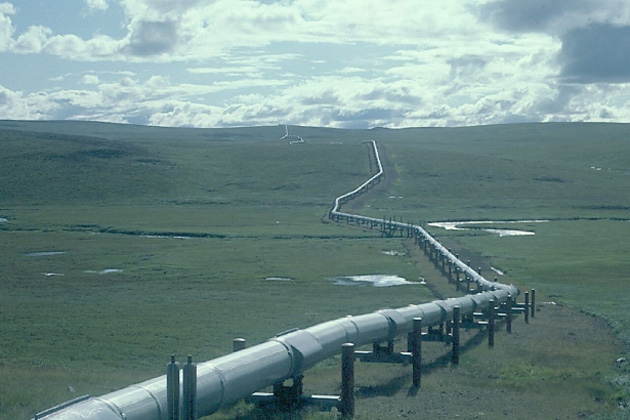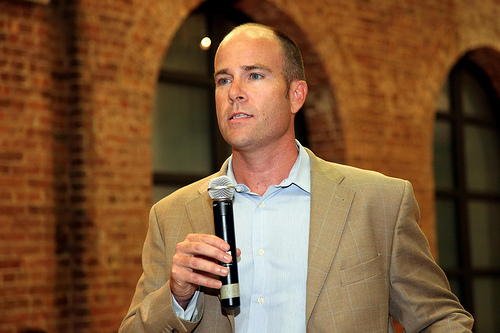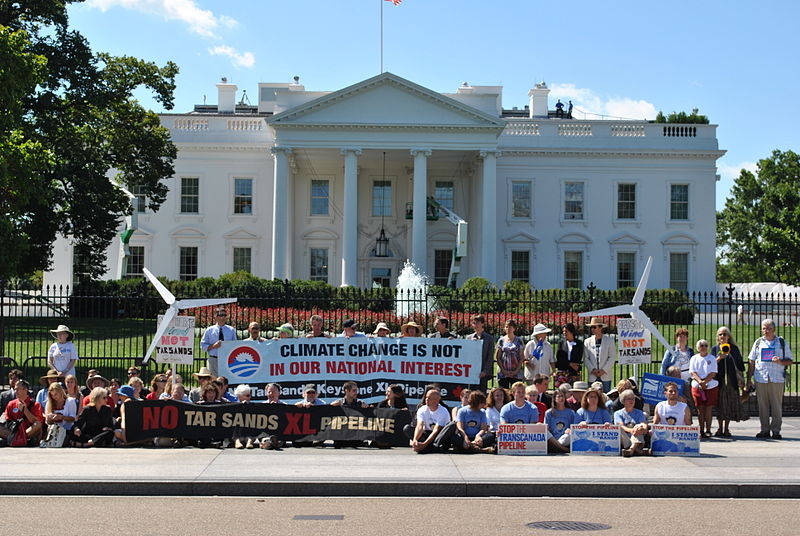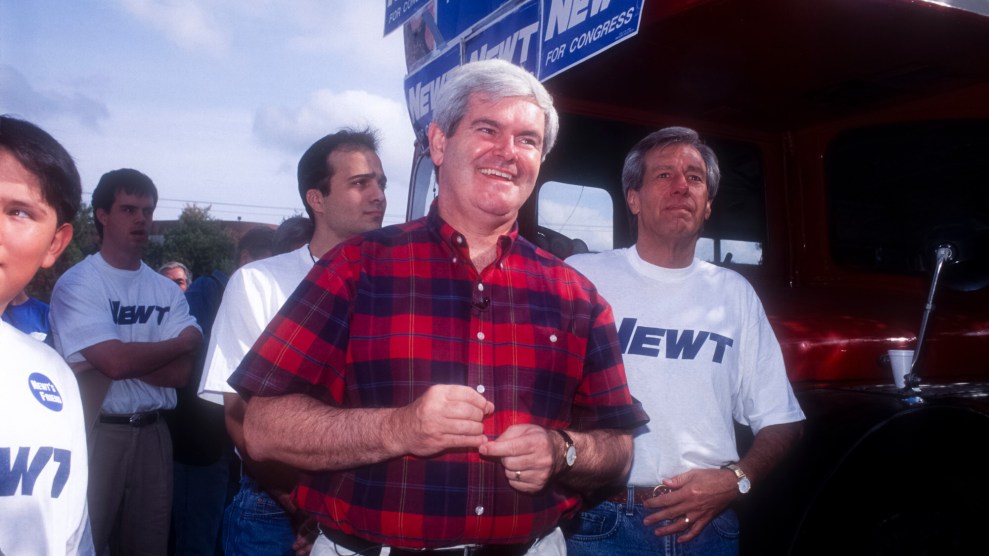
<a href="http://forbes.house.gov/news/email/show.aspx?ID=F2PZVMJDH75TW7H57HE7N2MNFM">Congressman J. Randy Forbes website</a>
This story first appeared on the TomDispatch website.
Presidential decisions often turn out to be far less significant than imagined, but every now and then what a president decides actually determines how the world turns. Such is the case with the Keystone XL pipeline, which, if built, is slated to bring some of the “dirtiest,” carbon-rich oil on the planet from Alberta, Canada, to refineries on the US Gulf Coast. In the near future, President Obama is expected to give its construction a definitive thumbs up or thumbs down, and the decision he makes could prove far more important than anyone imagines. It could determine the fate of the Canadian tar-sands industry and, with it, the future well-being of the planet. If that sounds overly dramatic, let me explain.
Sometimes, what starts out as a minor skirmish can wind up determining the outcome of a war—and that seems to be the case when it comes to the mounting battle over the Keystone XL pipeline. If given the go-ahead by President Obama, it will daily carry more than 700,000 barrels of tar-sands oil to those Gulf Coast refineries, providing a desperately needed boost to the Canadian energy industry. If Obama says no, the Canadians (and their American backers) will encounter possibly insuperable difficulties in exporting their heavy crude oil, discouraging further investment and putting the industry’s future in doubt.
The battle over Keystone XL was initially joined in the summer of 2011, when environmental writer and climate activist Bill McKibben and 350.org, which he helped found, organized a series of non-violent anti-pipeline protests in front of the White House to highlight the links between tar sands production and the accelerating pace of climate change. At the same time, farmers and politicians in Nebraska, through which the pipeline is set to pass, expressed grave concern about its threat to that state’s crucial aquifers. After all, tar-sands crude is highly corrosive, and leaks are a notable risk.
In mid-January 2012, in response to those concerns, other worries about the pipeline, and perhaps a looming presidential campaign season, Obama postponed a decision on completing the controversial project. (He, not Congress, has the final say, since it will cross an international boundary.) Now, he must decide on a suggested new route that will, supposedly, take Keystone XL around those aquifers and so reduce the threat to Nebraska’s water supplies.
Ever since the president postponed the decision on whether to proceed, powerful forces in the energy industry and government have been mobilizing to press ever harder for its approval. Its supporters argue vociferously that the pipeline will bring jobs to America and enhance the nation’s “energy security” by lessening its reliance on Middle Eastern oil suppliers. Their true aim, however, is far simpler: to save the tar-sands industry (and many billions of dollars in US investments) from possible disaster.
Just how critical the fight over Keystone has become in the eyes of the industry is suggested by a recent pro-pipeline editorial in the trade publication Oil & Gas Journal:
“Controversy over the Keystone XL project leaves no room for compromise. Fundamental views about the future of energy are in conflict. Approval of the project would acknowledge the rich potential of the next generation of fossil energy and encourage its development. Rejection would foreclose much of that potential in deference to an energy utopia few Americans support when they learn how much it costs.”
Opponents of Keystone XL, who are planning a mass demonstration at the White House on February 17th, have also come to view the pipeline battle in epic terms. “Alberta’s tar sands are the continent’s biggest carbon bomb,” McKibben wrote at TomDispatch. “If you could burn all the oil in those tar sands, you’d run the atmosphere’s concentration of carbon dioxide from its current 390 parts per million (enough to cause the climate havoc we’re currently seeing) to nearly 600 parts per million, which would mean if not hell, then at least a world with a similar temperature.” Halting Keystone would not by itself prevent those high concentrations, he argued, but would impede the production of tar sands, stop that “carbon bomb” from further heating the atmosphere, and create space for a transition to renewables. “Stopping Keystone will buy time,” he says, “and hopefully that time will be used for the planet to come to its senses around climate change.”
A Pipeline With Nowhere to Go?
Why has the fight over a pipeline, which, if completed, would provide only 4% of the US petroleum supply, assumed such strategic significance? As in any major conflict, the answer lies in three factors: logistics, geography, and timing.
Start with logistics and consider the tar sands themselves or, as the industry and its supporters in government prefer to call them, “oil sands.” Neither tar nor oil, the substance in question is a sludge-like mixture of sand, clay, water, and bitumen (a degraded, carbon-rich form of petroleum). Alberta has a colossal supply of the stuff—at least a trillion barrels in known reserves, or the equivalent of all the conventional oil burned by humans since the onset of commercial drilling in 1859. Even if you count only the reserves that are deemed extractible by existing technology, its tar sands reportedly are the equivalent of 170 billion barrels of conventional petroleum—more than the reserves of any nation except Saudi Arabia and Venezuela. The availability of so much untapped energy in a country like Canada, which is private-enterprise-friendly and where the political dangers are few, has been a magnet for major international energy firms. Not surprisingly, many of them, including ExxonMobil, Chevron, ConocoPhillips, and Royal Dutch Shell, have invested heavily in tar-sands operations.
 Tar sands, however, bear little resemblance to the conventional oil fields which these companies have long exploited. They must be treated in various energy-intensive ways to be converted into a transportable liquid and then processed even further into usable products. Some tar sands can be strip-mined like coal and then “upgraded” through chemical processing into a synthetic crude oil—SCO, or “syncrude.” Alternatively, the bitumen can be pumped from the ground after the sands are exposed to steam, which liquefies the bitumen and allows its extraction with conventional oil pumps. The latter process, known as steam-assisted gravity drainage (SAGD), produces a heavy crude oil. It must, in turn, be diluted with lighter crudes for transportation by pipeline to specialized refineries equipped to process such oil, most of which are located on the Gulf Coast.
Tar sands, however, bear little resemblance to the conventional oil fields which these companies have long exploited. They must be treated in various energy-intensive ways to be converted into a transportable liquid and then processed even further into usable products. Some tar sands can be strip-mined like coal and then “upgraded” through chemical processing into a synthetic crude oil—SCO, or “syncrude.” Alternatively, the bitumen can be pumped from the ground after the sands are exposed to steam, which liquefies the bitumen and allows its extraction with conventional oil pumps. The latter process, known as steam-assisted gravity drainage (SAGD), produces a heavy crude oil. It must, in turn, be diluted with lighter crudes for transportation by pipeline to specialized refineries equipped to process such oil, most of which are located on the Gulf Coast.
Extracting and processing tar sands is an extraordinarily expensive undertaking, far more so than most conventional oil drilling operations. Considerable energy is needed to dig the sludge out of the ground or heat the water into steam for underground injection; then, additional energy is needed for the various upgrading processes. The environmental risks involved are enormous (even leaving aside the vast amounts of greenhouse gases that the whole process will pump into the atmosphere). The massive quantities of water needed for SAGD and those upgrading processes, for example, become contaminated with toxic substances. Once used, they cannot be returned to any water source that might end up in human drinking supplies—something environmentalists say is already occurring. All of this and the expenses involved mean that the multibillion-dollar investments needed to launch a tar-sands operation can only pay off if the final product fetches a healthy price in the marketplace.
And that’s where geography enters the picture. Alberta is theoretically capable of producing five to six million barrels of tar-sands oil per day. In 2011, however, Canada itself consumed only 2.3 million barrels of oil per day, much of it supplied by conventional (and cheaper) oil from fields in Saskatchewan and Newfoundland. That number is not expected to rise appreciably in the foreseeable future. No less significant, Canada’s refining capacity for all kinds of oil is limited to 1.9 million barrels per day, and few of its refineries are equipped to process tar sands-style heavy crude. This leaves the producers with one strategic option: exporting the stuff.
And that’s where the problems really begin. Alberta is an interior province and so cannot export its crude by sea. Given the geography, this leaves only three export options: pipelines heading east across Canada to ports on the Atlantic, pipelines heading west across the Rockies to ports in British Columbia, or pipelines heading south to refineries in the United States.
Alberta’s preferred option is to send the preponderance of its tar-sands oil to its biggest natural market, the United States. At present, Canadian pipeline companies do operate a number of conduits that deliver some of this oil to the US, notably the original Keystone conduit extending from Hardisty, Alberta, to Illinois and then southward to Cushing, Oklahoma. But these lines can carry less than one million barrels of crude per day, and so will not permit the massive expansion of output the industry is planning for the next decade or so.
In other words, the only pipeline now under development that would significantly expand Albertan tar-sands exports is Keystone XL. It is vitally important to the tar-sands producers because it offers the sole short-term—or possibly even long-term—option for the export and sale of the crude output now coming on line at dozens of projects being developed across northern Alberta. Without it, these projects will languish and Albertan production will have to be sold at a deep discount—at, that is, a per-barrel price that could fall below production costs, making further investment in tar sands unattractive. In January, Canadian tar-sands oil was already selling for $30-$40 less than West Texas Intermediate (WTI), the standard US blend.
The Pipelines That Weren’t
Like an army bottled up geographically and increasingly at the mercy of enemy forces, the tar-sands producers see the completion of Keystone XL as their sole realistic escape route to survival. “Our biggest problem is that Alberta is landlocked,” the province’s finance minister Doug Horner said in January. “In fact, of the world’s major oil-producing jurisdictions, Alberta is the only one with no direct access to the ocean. And until we solve this problem… the [price] differential will remain large.”
Logistics, geography, and finally timing. A presidential stamp of approval on the building of Keystone XL will save the tar-sands industry, ensuring them enough return to justify their massive investments. It would also undoubtedly prompt additional investments in tar-sands projects and further production increases by an industry that assumed opposition to future pipelines had been weakened by this victory.
A presidential thumbs-down and resulting failure to build Keystone XL, however, could have lasting and severe consequences for tar-sands production. After all, no other export link is likely to be completed in the near-term. The other three most widely discussed options—the Northern Gateway pipeline to Kitimat, British Columbia, an expansion of the existing Trans Mountain pipeline to Vancouver, British Columbia, and a plan to use existing, conventional-oil conduits to carry tar-sands oil across Quebec, Vermont, and New Hampshire to Portland, Maine—already face intense opposition, with initial construction at best still years in the future.
The Northern Gateway project, proposed by Canadian pipeline company Enbridge, would stretch from Bruderheim in northern Alberta to Kitimat, a port on Charlotte Sound and the Pacific. If completed, it would allow the export of tar-sands oil to Asia, where Canadian Prime Minister Stephen Harper sees a significant future market (even though few Asian refineries could now process the stuff). But unlike oil-friendly Alberta, British Columbia has a strong pro-environmental bias and many senior provincial officials have expressed fierce opposition to the project. Moreover, under the country’s constitution, native peoples over whose land the pipeline would have to travel must be consulted on the project—and most tribal communities are adamantly opposed to its construction.
Another proposed conduit—an expansion of the existing Trans Mountain pipeline from Edmonton to Vancouver—presents the same set of obstacles and, like the Northern Gateway project, has aroused strong opposition in Vancouver.
This leaves the third option, a plan to pump tar-sands oil to Ontario and Quebec and then employ an existing pipeline now used for oil imports. It connects to a terminal in Casco Bay, near Portland, Maine, where the Albertan crude would begin the long trip by ship to those refineries on the Gulf Coast. Although no official action has yet been taken to allow the use of the US conduit for this purpose, anti-pipeline protests have already erupted in Portland, including one on January 26th that attracted more than 1,400 people.
With no other pipelines in the offing, tar sands producers are increasing their reliance on deliveries by rail. This is producing boom times for some long-haul freight carriiers, but will never prove sufficient to move the millions of barrels in added daily output expected from projects now coming on line.
The conclusion is obvious: without Keystone XL, the price of tar-sands oil will remain substantially lower than conventional oil (as well as unconventional oil extracted from shale formations in the United States), discouraging future investment and dimming the prospects for increased output. In other words, as Bill McKibben hopes, much of it will stay in the ground.
Industry officials are painfully aware of their predicament. In an Annual Information Form released at the end of 2011, Canadian Oil Sands Limited, owner of the largest share of Syncrude Canada (one of the leading producers of tar-sands oil) noted:
“A prolonged period of low crude oil prices could affect the value of our crude oil properties and the level of spending on growth projects and could result in curtailment of production… Any substantial and extended decline in the price of oil or an extended negative differential for SCO compared to either WTI or European Brent Crude would have an adverse effect on the revenues, profitability, and cash flow of Canadian Oil Sands and likely affect the ability of Canadian Oil Sands to pay dividends and repay its debt obligations.”
The stakes in this battle could not be higher. If Keystone XL fails to win the president’s approval, the industry will certainly grow at a far slower pace than forecast and possibly witness the failure of costly ventures, resulting in an industry-wide contraction. If approved, however, production will soar and global warming will occur at an even faster rate than previously projected. In this way, a presidential decision will have an unexpectedly decisive and lasting impact on all our lives.
Michael Klare is a professor of peace and world security studies at Hampshire College, a TomDispatch regular and the author, most recently, of The Race for What’s Left, just published in paperback. A documentary movie based on his book Blood and Oil can be previewed and ordered at www.bloodandoilmovie.com. You can follow Klare on Facebook by clicking here. To stay on top of important articles like these, sign up to receive the latest updates from TomDispatch.com here.















